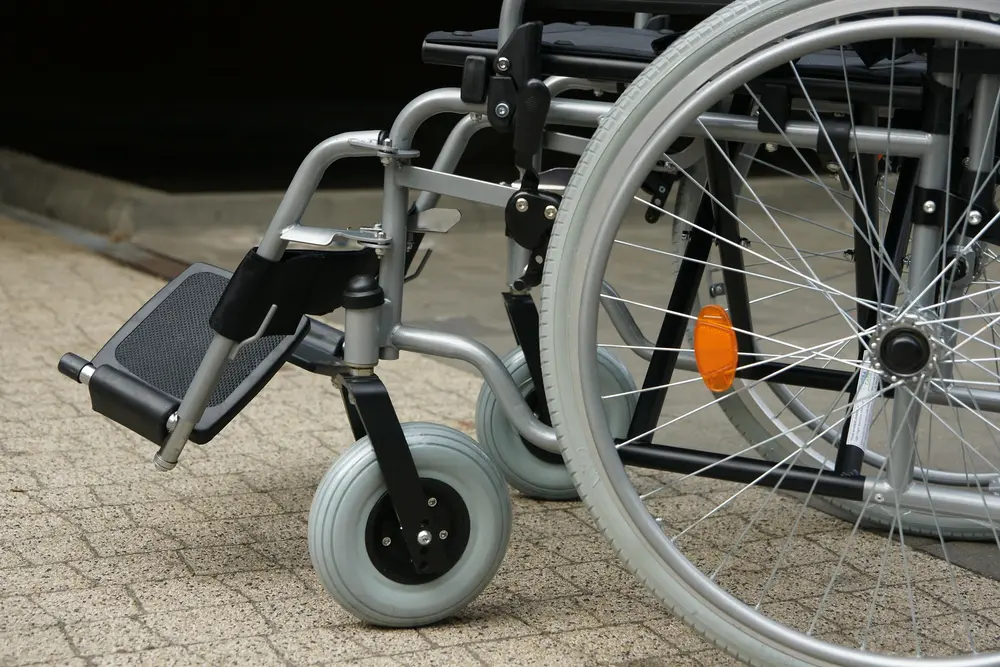In our last post, we discussed Social Security’s 5-step sequential evaluation process for adult disability claims. At Step 3, Social Security determines if a claimant’s impairments, either singly or in combination, meet or equal in severity one of SSA’s listed impairments. Social Security’s Listing of Impairments describes for each major body system impairments considered severe enough to prevent an individual from doing any gainful activity. They do not encompass all possible impairments. Listing 14.00 is titled, “Immune System Disorders – Adult.” It contains a number of illnesses within it, each separately enumerated. In this post, we’ll be discussing the Listings in the context of Immune System Disorders – Inflammatory Arthritis – Ankylosing Spondylitis.
The introductory comments in Listing 14.00 (Immune System Disorders) discuss various types of inflammatory arthritis
“The spectrum of inflammatory arthritis includes a vast array of disorders that differ in cause, course, and outcome. Clinically, inflammation of major peripheral joints may be the dominant manifestation causing difficulties with ambulation (walking) or fine and gross movements; there may be joint pain, swelling, and tenderness. The arthritis may affect other joints, or cause less limitation in ambulation or the performance of fine and gross movements. However, in combination with extra-articular features, including constitutional symptoms or signs (severe fatigue, fever, malaise, involuntary weight loss), inflammatory arthritis may result in an extreme limitation…
Inflammatory arthritis involving the axial spine (spondyloarthropathy) may be associated with disorders such as: (i) Reiter’s syndrome; (ii) ankylosing spondylitis; (iii) psoriatic arthritis; (iv) Whipple’s disease; (v) Behçet’s disease; and (vi) Inflammatory bowel disease. Inflammatory arthritis involving peripheral joints may be associated with disorders such as: (i) rheumatoid arthritis; (ii) Sjögren’s syndrome; (iii) psoriatic arthritis; (iv) crystal deposition disorders (gout and pseudogout); (v) Lyme disease; and (vi) inflammatory bowel disease.”
Listing 14.00 further states that: “Extra-articular features of inflammatory arthritis may involve any body system; for example: Musculoskeletal (heel enthesopathy), ophthalmologic (iridocyclitis, keratoconjunctivitis sicca, uveitis), pulmonary (pleuritis, pulmonary fibrosis or nodules, restrictive lung disease), cardiovascular (aortic valve insufficiency, arrhythmias, coronary arteritis, myocarditis, pericarditis, Raynaud’s phenomenon, systemic vasculitis), renal (amyloidosis of the kidney), hematologic (chronic anemia, thrombocytopenia), neurologic (peripheral neuropathy, radiculopathy, spinal cord or cauda equina compression with sensory and motor loss), mental (cognitive dysfunction, poor memory), and immune system (Felty’s syndrome (hypersplenism with compromised immune competence).”
Within Listing 14.00 is Listing 14.09 – Inflammatory arthritis. There are four sections contained in this Listing
1. Persistent inflammation or persistent deformity of: 1. One or more major peripheral weight-bearing joints resulting in the inability to ambulate effectively…or 2. One or more major peripheral joints in each upper extremity resulting in the inability to perform fine and gross movements effectively.
2. Inflammation or deformity in one or more major peripheral joints with: 1. Involvement of two or more organs/body systems with one of the organs/body systems involved to at least a moderate level of severity; and 2. At least two of the constitutional symptoms or signs (severe fatigue, fever, malaise, or involuntary weight loss.)
3. Ankylosing spondylitis or other spondyloarthropathies, with: 1. Ankylosis (fixation) of the dorsolumbar or cervical spine as shown by appropriate medically acceptable imaging and measured on physical examination at 45° or more of flexion from the vertical position (zero degrees); or 2. Ankylosis (fixation) of the dorsolumbar or cervical spine as shown by appropriate medically acceptable imaging and measured on physical examination at 30° or more of flexion (but less than 45°) measured from the vertical position (zero degrees), and involvement of two or more organs/body systems with one of the organs/body systems involved to at least a moderate level of severity.
4. Repeated manifestations of inflammatory arthritis, with at least two of the constitutional symptoms or signs (severe fatigue, fever, malaise, or involuntary weight loss) and one of the following at the marked level: 1. Limitation of activities of daily living, 2. Limitation in maintaining social functioning, 3. Limitation in completing tasks in a timely manner due to deficiencies in concentration, persistence, or pace.
The Inability to Effectively Ambulate (meaning walk, move about)
As used in the above listing, the inability to ambulate effectively means “…an extreme limitation of the ability to walk; i.e., an impairment that interferes very seriously with the individual’s ability to independently initiate, sustain, or complete activities. Ineffective ambulation is defined generally as having insufficient lower extremity functioning (see 1.00J) to permit independent ambulation without the use of a hand-held assistive device(s) that limits the functioning of both upper extremities…To ambulate effectively, individuals must be capable of sustaining a reasonable walking pace over a sufficient distance to be able to carry out activities of daily living. They must have the ability to travel without companion assistance to and from a place of employment or school. Therefore, examples of ineffective ambulation include, but are not limited to, the inability to walk without the use of a walker, two crutches or two canes, the inability to walk a block at a reasonable pace on rough or uneven surfaces, the inability to use standard public transportation, the inability to carry out routine ambulatory activities, such as shopping and banking, and the inability to climb a few steps at a reasonable pace with the use of a single hand rail. The ability to walk independently about one’s home without the use of assistive devices does not, in and of itself, constitute effective ambulation.
This listing also considers functional impairments in the arms, hands, and fingers
SSA’s regulations state that, “inability to perform fine and gross movements effectively means an extreme loss of function of both upper extremities; i.e., an impairment that interferes very seriously with the individual’s ability to independently initiate, sustain, or complete activities. To use their upper extremities effectively individuals must be capable of sustaining such functions as reaching, pushing, pulling, grasping, and fingering to be able to carry out activities of daily living. Therefore, examples of inability to perform fine and gross movements effectively include, but are not limited to, the inability to prepare a simple meal and feed oneself, the inability to take care of personal hygiene, the inability to sort and handle papers or files, and the inability to place files in a file cabinet at or above waist level.”
As you can see, a Listing can be quite detailed and involved; and this is for just one of the Listings. If you want to see all of SSA’s Listings, click here.
In our next post, we’ll continue to explore how SSA evaluates disability claims, particularly for those suffering from arthritis. As always, thank you for reading!






